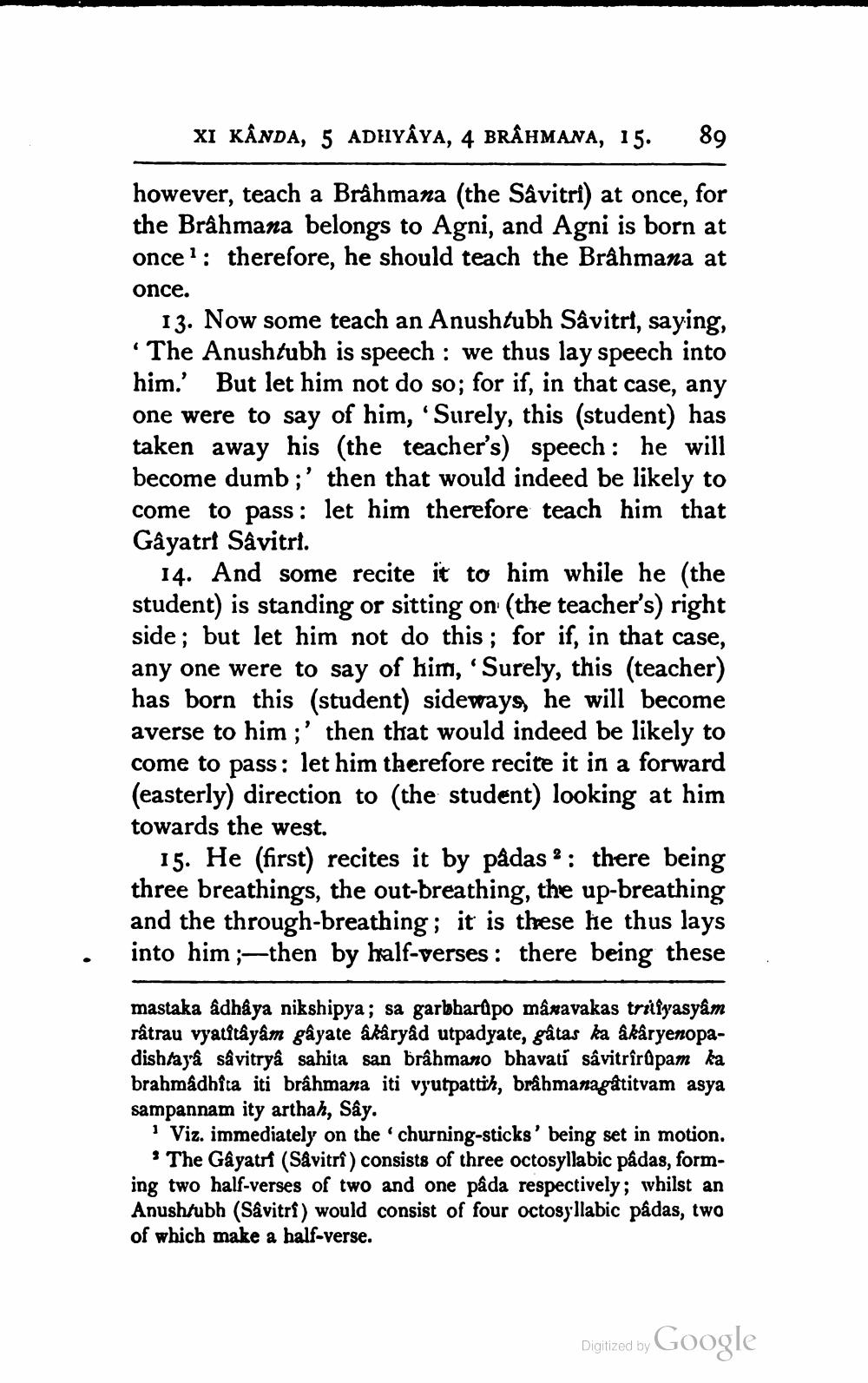________________
XI KÂNDA, 5 ADHYAYA, 4 BRÂHMANA, 15.
89
however, teach a Brâhmana (the Savitri) at once, for the Brâhmana belongs to Agni, and Agni is born at once?: therefore, he should teach the Brâhmana at once.
13. Now some teach an Anushtubh Sâvitri, saying, · The Anushtubh is speech : we thus lay speech into him. But let him not do so; for if, in that case, any one were to say of him, 'Surely, this (student) has taken away his (the teacher's) speech: he will become dumb;' then that would indeed be likely to come to pass : let him therefore teach him that Gayatri Sâvitri.
14. And some recite it to him while he (the student) is standing or sitting on (the teacher's) right side; but let him not do this ; for if, in that case, any one were to say of him, 'Surely, this (teacher) has born this (student) sideways, he will become averse to him ;' then that would indeed be likely to come to pass; let him therefore recite it in a forward (easterly) direction to the student) looking at him towards the west.
15. He (first) recites it by pâdas 2: there being three breathings, the out-breathing, the up-breathing and the through-breathing; it is these he thus lays into him ;—then by half-verses: there being these
mastaka adhaya nikshipya; sa garbharûpo mâxavakas trifyasyam râtrau vyatitâyâm gâyate âkâryâd utpadyate, gâtas ka âkâryenopadishtaya savitrya sahita san brâhmano bhavati savitrîrûpam ka brahmâdhita iti brâhmana iti vyutpattih, brâhmanagatitvam asya sampannam ity arthah, Sây.
1 Viz. immediately on the churning-sticks' being set in motion.
* The Gayatri (Såvitri) consists of three octosyllabic pâdas, forming two half-verses of two and one pâda respectively; whilst an Anushtubh (Savitri) would consist of four octosyllabic pâdas, two of which make a half-verse.
Digitized by Google




